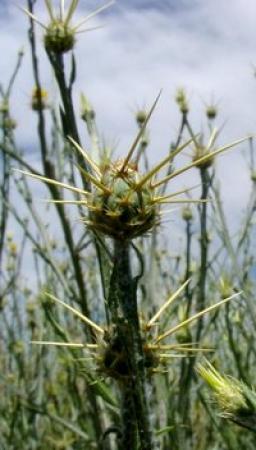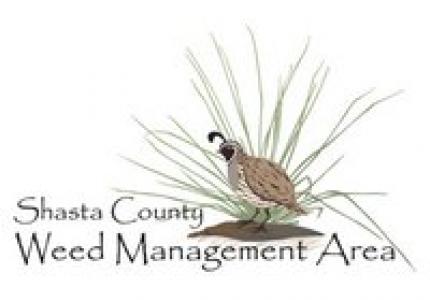Weed Eradication
Certified Weed Free Forage Information
Some invasive foreign weeds have been singled-out by California as being exceptionally detrimental to agriculture and wildlands (see California's Pest Rating System). The Shasta County Weed Eradication Program is responsible for identifying these noxious weed populations and assuring that those populations are eliminated.
Agriculture department staff educate and encourage landowners to aggressively remove these invaders; species that are proven to overrun crop, pasture and rangeland, or invade forests, riparian corridors, estuaries and other natural habitats. These plants often taint crops such as hay, costing millions of dollars annually to farmers. In many situations, they create a monoculture throughout an entire ecosystem, displacing many of the native inhabitants.
Responsible landowners often choose to eliminate the populations themselves. In such cases, we gladly assist with identification and information that will allow them to make informed decisions about courses of action. Shasta County Department of Agriculture also contracts with public and private landowners to aid in rated noxious weed control.
Found an invasive weed? Please let us know by completing this Noxious Weed Reporting Form.
Weed FAQs
If I find noxious weeds on my property, what are my options in dealing with the county in eradicating the plants? Can I do it myself? Can I get help to do it?
Answer: Depending on the species of noxious weed, it may be required by regulation to be eradicated. If the weed is A, B, or Q-rated (see our weeds page for rating details) it must be removed. Landowner options include removing the weed themselves, hiring a licensed pest control operator, or contracting with our office.
Landowners who decide to chemically treat weeds themselves and wish to use a restricted material, or a large quantity of a non-restricted herbicide, need to first obtain a Permit or an Operator Identification number. Operator ID's are free and we will need your name, address, and original signature. Restricted material permits are also free, but require that you pass a test for a Private Applicator Certificate, in most situations. If you are applying on agricultural land, it is necessary to obtain an Operator ID or a permit and report the use. Please contact our office for more details or to set up an appointment.
I have Thistles growing in my pastures next to my house, will they hurt my livestock and how can I get rid of them?
Answer: The first step is to identify the thistle. You may bring a sample into our office for identification. Many thistles discourage grazing and some "thistles" can be toxic.
How can I get rid of Poison Oak that is growing around my house and what can I do to keep it from spreading?
Answer: There are special herbicides on the market specifically for the eradication of Poison Oak and other woody plants. You may contact a weed control company or Pest Control Advisor for professional help. Read and follow the label of any herbicide carefully. If you require large quantities of herbicide, a chemical supply company will require you to obtain an Operator I.D. Please call our office to request one. Operator I.D.s are free and we will need your name, address, and original signature. If you are applying on land that contains an agricultural commodity, it is necessary to obtain a permit and report the use. Please contact our office for more details.
There are weeds growing in my pond and irrigation ditch that are clogging up the water flow, how can I find out what kind of weeds they are and what to do to get rid of them?
Answer: Aquatic weed control is a special field of pest control that may involve other agencies' regulations. Contact a professional weed control company for advice on how to eradicate the weeds. Many aquatic organisms are highly sensitive to herbicides in common use. For simple plant identification a sample can be brought into our office. Our exclusion staff are constantly on the lookout for invasive foreign aquatics.


